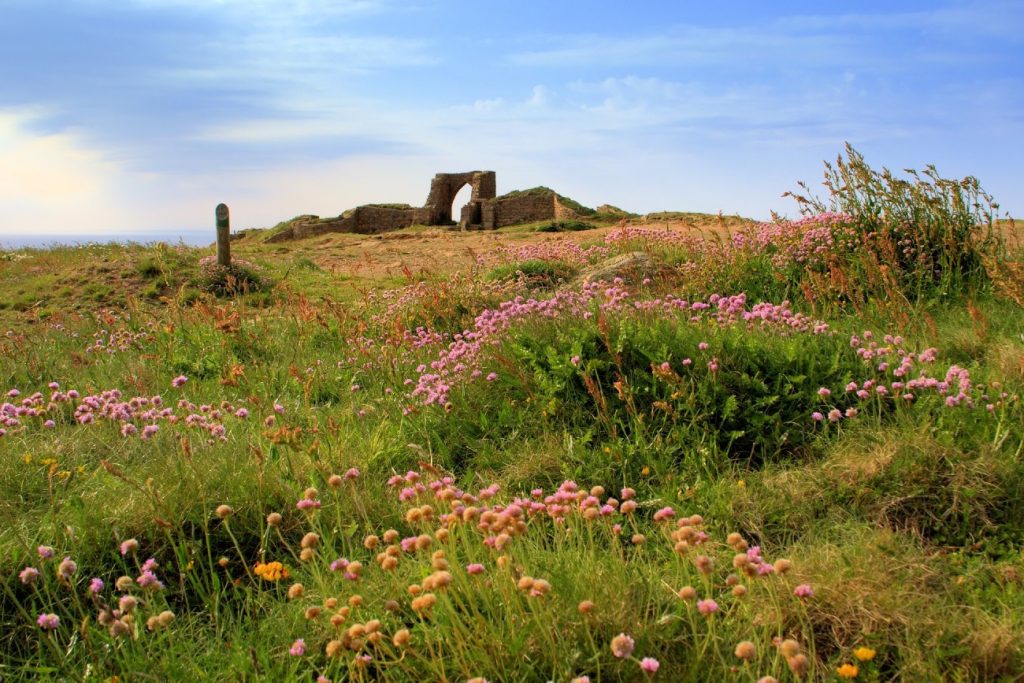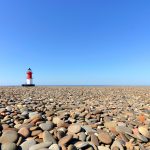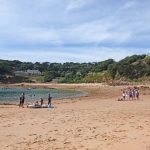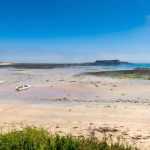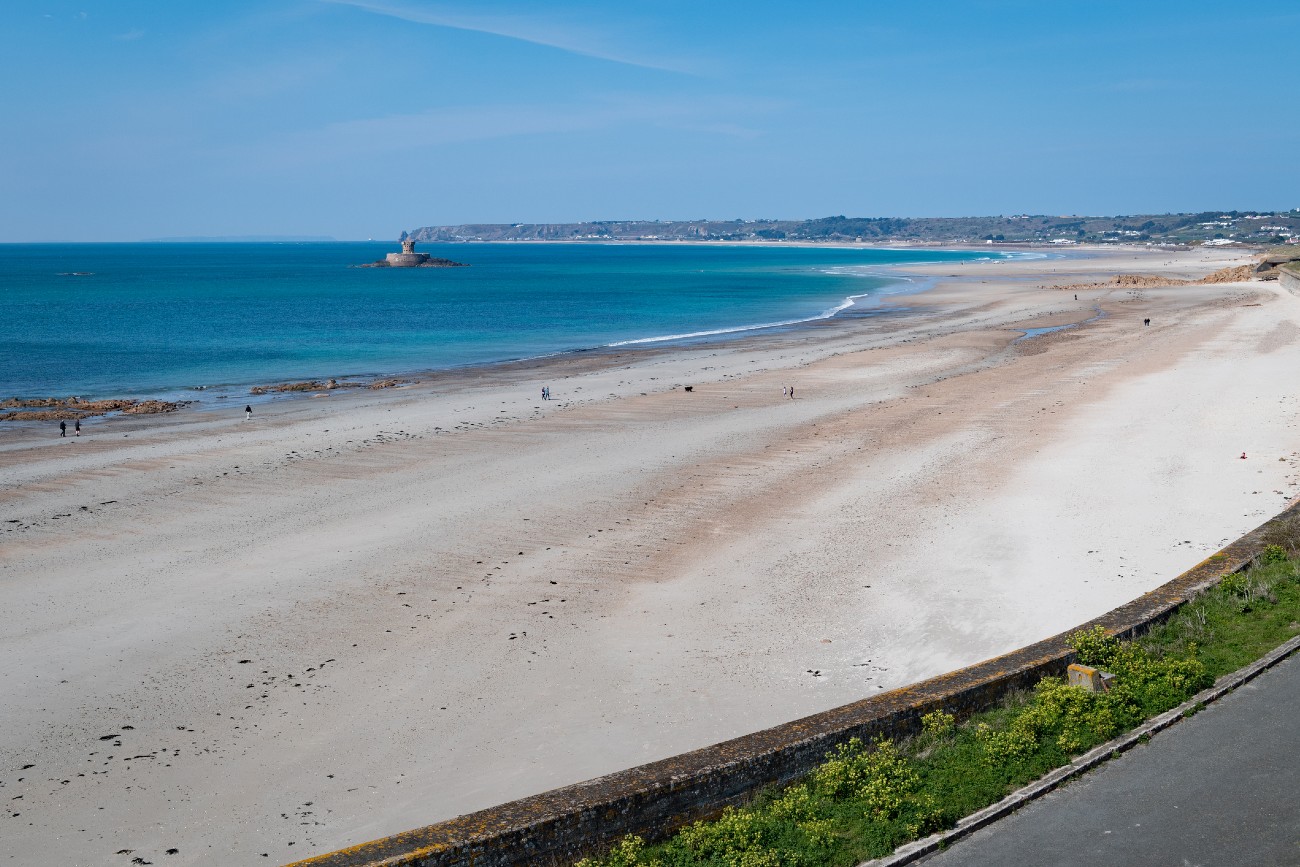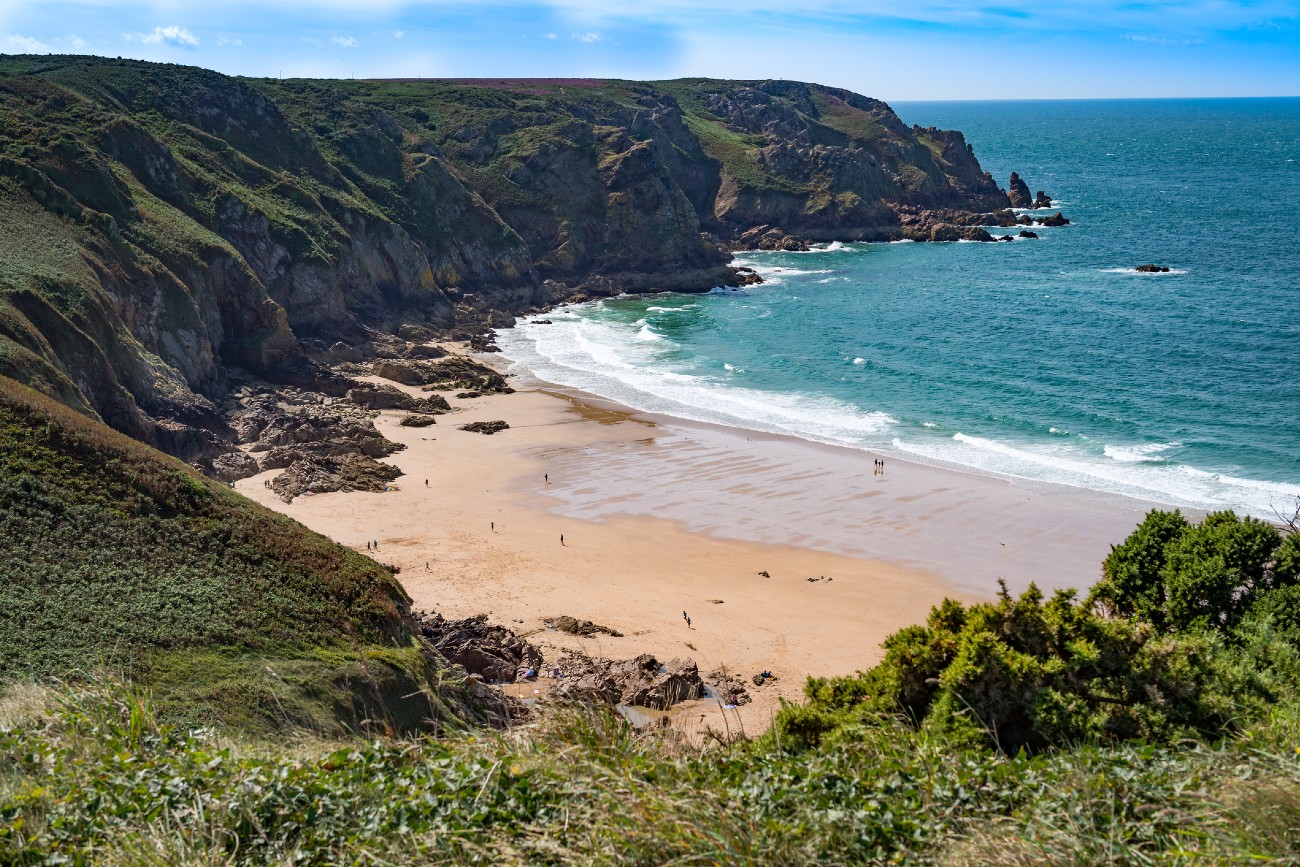
Jersey’s 70 kilometres of coastline have much to offer the intrepid explorer. The north-west coast in particular can be a place to really get back to nature and is a world away from the busy settlements on the island’s south coast.
Here, the peaceful farmland gives way to dramatic clifftop views and secluded bays, accompanied by a sea air that is as fresh and invigorating as anywhere in the world. The landscape of north-west Jersey is one that is filled with secrets, some of which are only revealed when the tide is just right.
When I followed the winding roads as far north as they go, I found myself at a headland known as Plemont Point. An area of rugged beauty, this small peninsula forms part of a bay which goes by the same name. At high tide, it might look like many other parts of the north-west coastline, but the retreating waters reveal one of Jersey’s best-loved beaches – Plemont Beach. The beach has been a favourite of the locals as far back as Victorian times, with its sweeping white sands and a backdrop of tall cliffs making for a spectacular sight.
Plemont beach is great for sunbathing and swimming, particularly on warm summer days, but it also has a few hidden charms to offer the more adventurous visitor. At the rear of the Beach, a small waterfall tumbles down from the headland above. If you pass through the waterfall, you’ll be rewarded with the discovery of the largest cave system on the island.
This can be perfect for a little adventure, just be sure to check the tides before you go, as the beach and its secrets are only visible for a few hours at a time, before they disappear beneath the ocean.
Point And Les Landes
With the beach at Plemont Bay being a temporary feature, you can easily extend a visit to the north-west coast of Jersey by exploring the surrounding headlands. Plemont Point and the neighbouring headland of Les Landes have some fantastic opportunities for coastal walking and are both areas that are important for wildlife.
Les Landes might be most famous on the island for being home to the Jersey Race Club, but it’s also a Site of Special Scientific Interest and is the largest area of heathland anywhere on the Channel Islands.
The heather and gorse that dominate the landscape here can be wonderfully colourful at certain times of year, providing refuge for a number of rare wildlife species. The ponds are a haven for toads and the birdlife is especially diverse, with skylarks, ring ouzels and hen harriers being just some of the species you might be lucky to encounter. The heathland is also a great place for wildflowers during spring and summer, with beautiful primroses bringing a further splash of colour to the landscape.
Butterflies are attracted in large numbers at this time of year, with some notable examples being the Green Hairstreak and the Grayling.
Along with the wildlife, Les Landes is the site of Grosnez Castle – the remains of a 14th century construction that was built to protect the area from a potential French attack and one of my favourite places to visit. If walking the north-west coast, this can be an intriguing place to visit. Be sure not to miss the view of Le Pinacle either, a fantastic sea stack that sits at the end of the headland at Les Landes and rises 60 metres above the shore.
A Colourful Resident
There are many wildlife highlights to see around Jersey’s north-west coast, but there is one that is by far the most colourful. You’ll need to take a dip in the ocean in order to catch a glimpse of it, but the calm seas of Plemont Bay are the perfect place to do so. The animal is a type of fish called the Cuckoo Wrasse, one that is common in the Atlantic Ocean and lives in shallow waters around the coast. The most striking feature of this fish is its colour, with females being a pale pink and males having a beautiful mixture of orange and electric blue.
Cuckoo Wrasse have a rather unusual life strategy. They normally live in small female groups headed by one dominant male. But if the male dies for whatever reason, the most senior female on the reef will change sex and become the new head male. Being small fish – only growing to around 30 centimetres – they tend to feed on crustaceans and molluscs, although they will sometimes catch smaller fish as well. Around the bays of Jersey, your best chance to see the Cuckoo Wrasse is by snorkelling just offshore.
Plemont Bay is a must-see destination on the Jersey coast and is teeming with fantastic wildlife. The beach alone is well worth the trip, but the surrounding headlands of Plemont Point and Les Landes offer great opportunities for hiking and exploring.
Would you like to learn more about the incredible nature of Jersey? Read the following article: The Jersey Marshes – A Conversation Success Story


